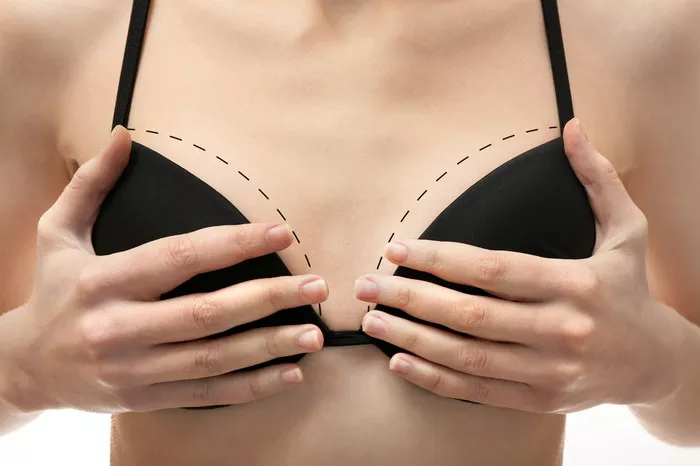Breast augmentation, commonly known as a boob job, is a surgical procedure that enhances the size and shape of the breasts. It is a highly personal decision that many women consider to enhance their body image and self-confidence. However, when contemplating any surgical procedure, it is crucial to address concerns about safety. In this article, we will discuss the safety of getting a boob job and important considerations to keep in mind.
Understanding the Procedure
Breast augmentation surgery involves the use of implants or fat transfer techniques to increase the size and improve the shape of the breasts. It is typically performed under general anesthesia, and the surgeon makes incisions to place the implants either above or below the chest muscle. The choice of implant type, size, and placement is determined based on the individual’s preferences and the surgeon’s expertise.
While breast augmentation is generally safe, it is important to understand that no surgery is entirely risk-free. Like any surgical procedure, breast augmentation carries potential risks and complications. However, with proper planning, a skilled surgeon, and appropriate aftercare, the risks can be minimized.
Factors Contributing to Safety
Several factors contribute to the safety of breast augmentation surgery. These include:
1. Choosing a Qualified Surgeon
The most critical factor in ensuring the safety of a boob job is selecting a qualified and experienced plastic surgeon who specializes in breast augmentation. Look for a surgeon who is board-certified, has extensive experience in performing breast surgeries, and has a track record of successful outcomes. A skilled surgeon can guide you through the process, provide accurate information, and minimize the risks associated with the procedure.
2. Thorough Evaluation and Consultation
Prior to undergoing breast augmentation, you should have a thorough evaluation and consultation with your surgeon. During this consultation, the surgeon will assess your overall health, discuss your expectations, explain the procedure, and address any concerns you may have. The surgeon will also evaluate your breast anatomy, skin condition, and medical history to determine if you are a suitable candidate for the surgery.
3. Individualized Treatment Plan
Every woman’s body is unique, and a personalized treatment plan is crucial for ensuring safety and achieving desired results. Your surgeon will consider factors such as your breast size and shape, skin elasticity, chest wall structure, and lifestyle when creating a treatment plan that is tailored to your specific needs.
4. Implant Selection and Safety
If you opt for breast implants, there are various options to consider, including saline implants, silicone implants, or cohesive gel implants. It is important to discuss the benefits and risks of each type with your surgeon to make an informed decision. Modern breast implants are designed with safety in mind and have undergone extensive testing and improvement over the years.
5. Anesthesia and Surgical Facility
The administration of anesthesia during breast augmentation is an important aspect of safety. Ensure that your surgery is performed in an accredited surgical facility with a qualified anesthesiologist or certified nurse anesthetist overseeing the anesthesia administration. The surgical facility should meet all necessary safety standards and have appropriate emergency protocols in place.
Potential Risks and Complications
While breast augmentation is generally safe, it is essential to be aware of potential risks and complications, which may include:
- Infection: Although rare, infections can occur following breast augmentation surgery. Your surgeon will provide detailed instructions on how to prevent infection and prescribe antibiotics if necessary.
- Capsular Contracture: Capsular contracture refers to the formation of scar tissue around the implant, causing the breasts to feel firm or distorted. This can occur in some cases and may require additional treatment or implant revision.
- Implant Rupture or Leakage: Implants may rupture or leak over time. Saline implants will deflate if ruptured, while silicone implants may require imaging to detect rupture. If rupture or leakage occurs, further surgery may be necessary to replace the implant.
- Changes in Sensation: Some women may experience temporary or permanent changes in nipple or breast sensation after surgery. In most cases, these changes are mild and improve over time.
- Breastfeeding Difficulties: Breast augmentation surgery may impact the ability to breastfeed. It is important to discuss this concern with your surgeon if you plan to have children in the future.
- Scarring: While efforts are made to minimize scarring, incisions will leave scars. Your surgeon will discuss incision options and provide guidance on scar care to optimize healing.
- Anesthesia Risks: As with any surgical procedure, there are potential risks associated with anesthesia. Your surgeon and anesthesiologist will evaluate your medical history and overall health to minimize these risks.
Recovery and Aftercare
Following breast augmentation surgery, a proper recovery and aftercare plan is essential for optimal results and safety. Your surgeon will provide detailed instructions on post-operative care, including pain management, activity restrictions, and wearing a supportive bra. Attend all scheduled follow-up appointments to monitor your healing progress and address any concerns that may arise.
Conclusion
Breast augmentation, or a boob job, can be a safe and effective procedure for enhancing the size and shape of the breasts. However, it is important to choose a qualified surgeon, thoroughly evaluate your options, and have a realistic understanding of the potential risks and complications involved. With careful planning, personalized treatment, and proper aftercare, you can increase the likelihood of a successful and safe breast augmentation experience. Consult with a reputable plastic surgeon to discuss your goals, address any concerns, and determine if breast augmentation is right for you.


